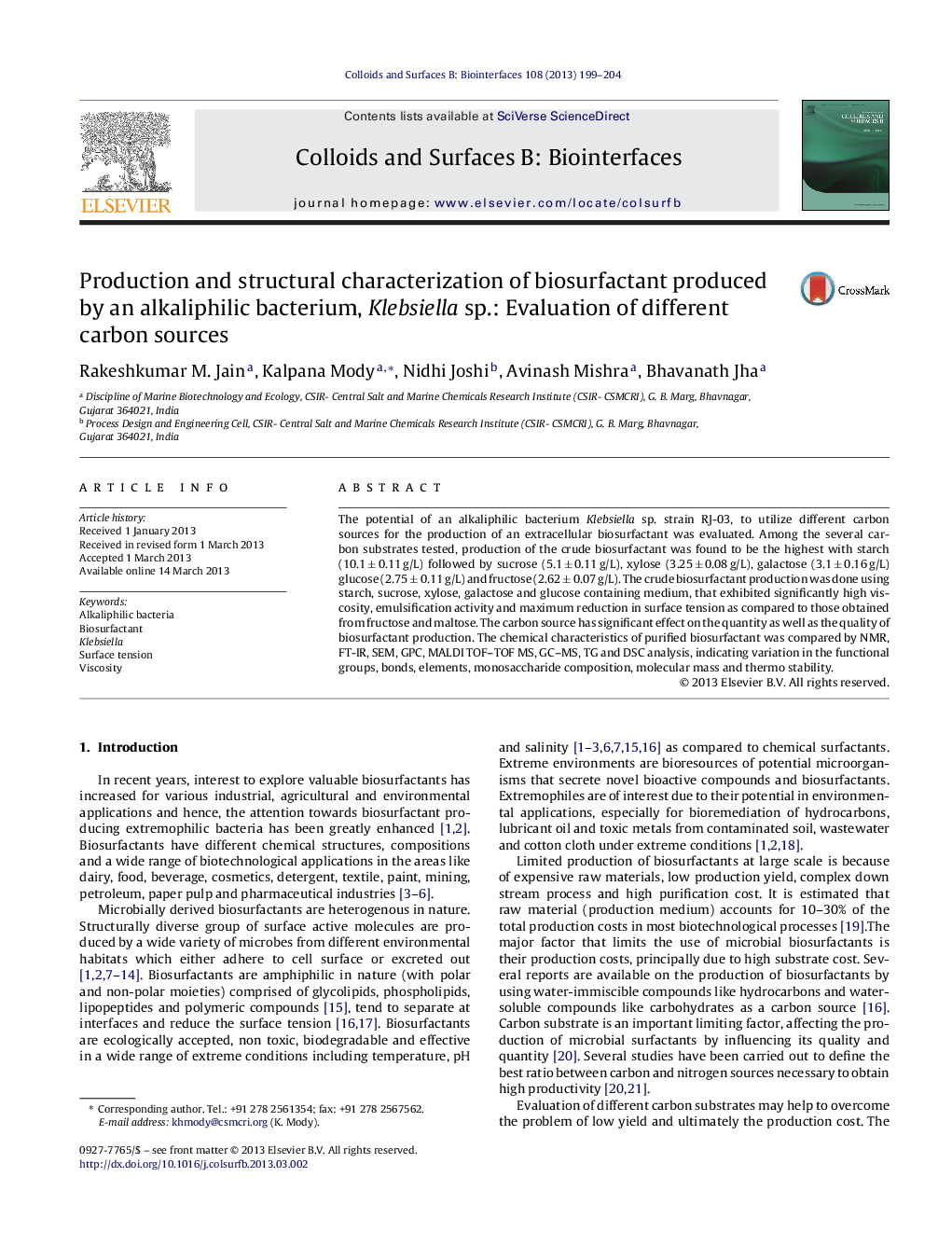| Article ID | Journal | Published Year | Pages | File Type |
|---|---|---|---|---|
| 600178 | Colloids and Surfaces B: Biointerfaces | 2013 | 6 Pages |
•Biosurfactant production by an alkaliphilic bacterium, Klebsiella sp. RJ-03.•Evaluation of carbon substrates for biosurfactant production.•Physico-chemical characterization of biosurfactant that is produced using different carbon substrates.
The potential of an alkaliphilic bacterium Klebsiella sp. strain RJ-03, to utilize different carbon sources for the production of an extracellular biosurfactant was evaluated. Among the several carbon substrates tested, production of the crude biosurfactant was found to be the highest with starch (10.1 ± 0.11 g/L) followed by sucrose (5.1 ± 0.11 g/L), xylose (3.25 ± 0.08 g/L), galactose (3.1 ± 0.16 g/L) glucose (2.75 ± 0.11 g/L) and fructose (2.62 ± 0.07 g/L). The crude biosurfactant production was done using starch, sucrose, xylose, galactose and glucose containing medium, that exhibited significantly high viscosity, emulsification activity and maximum reduction in surface tension as compared to those obtained from fructose and maltose. The carbon source has significant effect on the quantity as well as the quality of biosurfactant production. The chemical characteristics of purified biosurfactant was compared by NMR, FT-IR, SEM, GPC, MALDI TOF–TOF MS, GC–MS, TG and DSC analysis, indicating variation in the functional groups, bonds, elements, monosaccharide composition, molecular mass and thermo stability.
Graphical abstractFigure optionsDownload full-size imageDownload as PowerPoint slide
